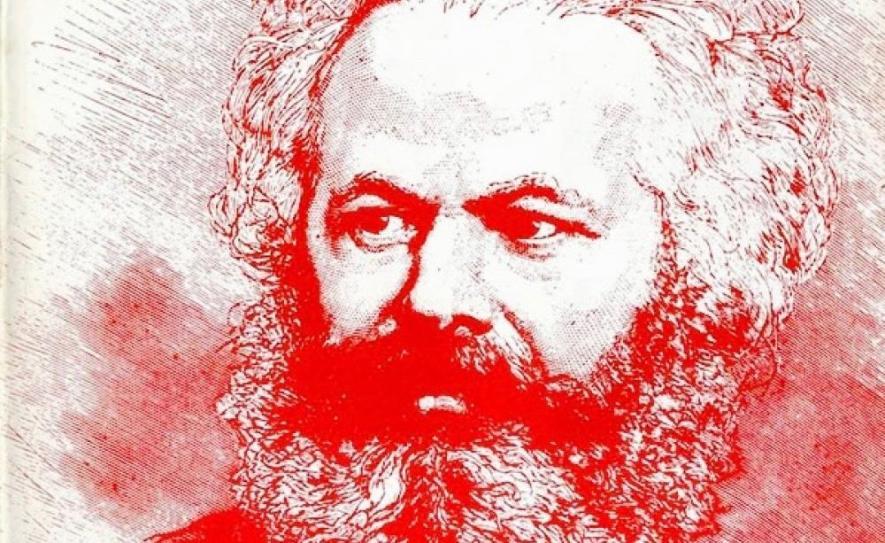REVIEW: A Compelling Summary of Marx’s 3 Volumes of 'Capital'

A few years ago, David Harvey, one of the world’s foremost Marxist scholars declared that ‘capitalism is too big to fail’. I want to add: capitalism is too disastrous to be continued. Vijay Prashad, E. Ahmet Tonak, Olivia C. Pires, Chris Caruso, and Emiliano Lopez have given a gift to young radicals in the shape of their book, Reading Capital to Smash Capitalism, that offers a compelling summary of Marx’s three volumes of Capital. Daunting as the tomes are, the authors have simplified the concepts and ideas well in 10 neat chapters.
The first chapter ‘Capital and Historical Materialism’ by Prashad provides a snapshot into the historical materialist method. The term was not used by Marx but was popularised by Georgi Plekhanov, a Russian Marxist whom Lenin once referred to as ‘the Pope of Marxism.’ Often derided as an economistic/economic deterministic schema by liberals and conservative intellectuals, historical materialism is a holistic method to observe, and dissect social phenomena.
A historical materialist lens sees the social phenomenon as an ensemble of social relations predicated upon the mode of production existing at a particular moment in history. The level of technique i.e., the forces of production engender their relations of production i.e., classes. So, under feudalism, we will have a class of feudal lords pitched against the serfs, under slavery, we will have masters pitched against the slaves, and under capitalism we will have capitalists pitched against the workers. In all such circumstances, the former will constitute a demographic minority and the latter group represents the major mass of the society. And the machination(s) to pump the surplus out is what constitutes the legal-social-cultural superstructure of the society.
The impetus for change, Prashad writes, “will come from the struggle between the productive forces which are themselves shaped by human beings, and the organization of society into classes, which are again shaped by human beings” (pg. 19).
The mutability of capitalism arises from this very fact that “it is not a permanent condition”. It is but “one more social formation in a long process of social development which like the preceding ones (slavery and feudalism) could be superseded”.
As a clarificatory addendum, I would want to add that at no time does the advance of capitalistic social relations cleanse society of pre-capitalist forms of bondage. For instance, 19th and early 20th century capitalist America witnessed slavery and a century of reconstruction that was marked by absolute social disability of the Blacks. India, too, is host to forms of oppressive social relations, chiefly the caste system.
What capitalism does is that its “uneven and combined development’ creates unique and mixed social amalgamations that feed capital accumulation. An example of this is a Dalit agricultural labourer who works on capitalist farms for a dismal wage. Indian tea and coffee plantations are the best examples of such oppression. The informal sector, which constitutes 93% of India’s economy has a Dalit workforce of 84% as compared to 54% from the upper/dominant castes. The average daily earnings of Dalits in the informal sector were Rs. 269, for the upper/dominant castes, it was Rs. 357 whilst the national average stood at Rs. 315, according to the government of India’s periodic labour force survey of 2018-19.
E. Ahmet Tonak in his chapter ‘Marx’s Interest in Political Economy’ traces the history and plan of Capital, as envisaged by Marx. Tonak also provides a small survey of Marx’s dialectical method. He shows that to offer a holistic understanding of capitalism, Marx rose from the abstract to the concrete instead of the other way round which is typical of the positivistic/empiricist method. Marx himself pointed to the follies of the latter method when he wrote ‘‘It seems to be correct, to begin with, the real and the concrete, with the real precondition, thus to begin, in economics, with E.g. the population, which is the foundation and the subject of the entire social act of production. However, on closer examination, this proves false. The population is an abstraction if I leave out, for example, the classes of which it is composed. These classes in turn are an empty phrase if I am not familiar with the elements on which they rest. E.g. wage labor, capital, etc. These latter in turn presuppose exchange, division of labor, prices, etc.’’ In Capital Vol-1, Marx starts his probing of capitalism/capitalist wealth, as marked by “an immense accumulation of commodities”. The abstract category of a commodity is deduced from the directly observable and concrete ‘wealth’ (pg. 37).
Olivia Pires’s chapter ‘Commodities and Exchange’ serves as a solid complement to Tonak’s chapter. Pires shows that commodities carry a dual nature, use value and exchange value. Under capitalism, the latter usurps the former. And during this process of exchange in the market, the surplus is pocketed by the seller who is the capitalist, and not the labourer who produced the commodity. This fact was elided by both Smith and Ricardo.
The labour theory of value offered by Ricardo states that the value of a commodity depends on the amount of labour time spent while producing it. Marx added that the source of value under capitalism i.e., labour power, itself becomes a commodity that is bought by the capitalist at a value less than the value the labourer creates for the capitalist.
Pires then notes that the realisation of surplus value/profits happens in the form of money--the universal representative of wealth. The state arrogates itself to the function(s) of managing money in various forms. Private capital increasingly depends on the state to provide credit and expand public debt. This dependence, at its extreme, takes the shape of colonialism and imperialism. The current conjuncture is marked by a phase of imperialism wherein the American dollar dominates the world. The domination makes it impossible for the currencies of the Global South to perform their three functions: means of circulation, unit of measure, and reserve of value (pg 51). For international transactions, they remain dependent on the dollar. The fight against imperialism involves the fight against the global monetary hegemony of the dollar.
In his chapter ‘Money-Capital-Labour Power’, Chris Caruso reiterates Marx’s classic formula of M-C-M. Caruso shows that the general assumption of classical political economists that circulation was an exchange of equivalent values is flawed because they failed to account for that one commodity that enriches the capitalist-labour power. In Chapter 6 of Capital titled ‘The Sale and Purchase of Labour Power’ Marx shows that the capitalist, in the sphere of circulation, finds labour power in the form of commodity ‘whose use-value possesses the peculiar property of being a source of value’ (pg 58). Through a cunning transaction, the capitalist pays only that much for the worker who sells his/her labour power to reproduce himself/herself at work or ‘for the socially necessary labour time it takes to reproduce that labour power’. At the same time, writes Caruso, ‘the capitalists can expect to take maximum advantage of the use-value provided by our labour power by having us work in the production process in order to create more value than it costs them in terms of exchange value’ (pg 60).
Through his two chapters on absolute and relative surplus value, Emiliano Lopez draws our attention toward how surplus is extracted by lengthening the workday of labourer and technical improvements. Absolute surplus value was the hallmark of earlier phases of capitalism wherein due to lack of technique workers made to work hard to the point that it damaged their bodies.
Sven Beckert in his book Empire of Cotton told the story of Ellen Hootton, a 10-year-old girl who was brought to depose before the His Majesty’s Factory Commission in 1833 on the dismal working conditions in cotton factories. Hootton said when she joined the factory at the age of seven, the work day would start at 5:30 a.m and end at 8:00 p.m. The global working class has succeeded, albeit partially, in winning the eight-hour workday. The inauguration of neo-liberalism has turned the clock back. Capital has found new destinations in the Global South wherein most of the work has been shifted and the workers are exploited to the brink.
One of the biggest questions before the mainstream pro-market economists is what could be done to save the world from the depredations of capitalism. To this, they have no formidable answer. Problems of the Global South are much more acute when compared to the Global North. The dominance of financialised neo-liberal capitalism has destroyed a huge mass of petty producers in our lands. Unlike the Global North, we do not have options to migrate to settler colonies. And capitalism does not have an immanent tendency to absorb the bulk of the petty producers that it displaces. The only option left before us then is to de-link from globalisation (on our terms) and challenge the might of neo-liberal capitalism head-on. Such politics of emancipation necessitates the reading of Marx’s Capital.
Reading Capital to Smash Capitalism is a good introduction to Marxist economics, especially for those who feel there is something seriously wrong with the world.
Reading Capital to Smash Capitalism. Ed. Vijay Prashad et.al. LeftWord. New Delhi. 2024. pp: 134. Paperback: Rs. 250.
The writer is Assistant Professor, Government College for Girls, Gurugram, Haryana. The views are personal.
Get the latest reports & analysis with people's perspective on Protests, movements & deep analytical videos, discussions of the current affairs in your Telegram app. Subscribe to NewsClick's Telegram channel & get Real-Time updates on stories, as they get published on our website.
























